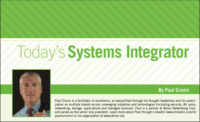Stress and pressure are two words that are often used interchangeably; but what if I told you that linking stress and pressure together doesn’t have to be the case? One does not always correlate to the other, and when we confuse these concepts, the benefits of both stress and pressure are quickly diminished.
Did I just say, “the benefits of stress and pressure”? You bet I did. Understanding the difference between these words and learning how to leverage them in different leadership applications could mean the difference between success and failure for you and your team.
Stress Versus Pressure
Purely from a scientific perspective, pressure is a force applied to an object’s surface (think about the pressure of water coming out of a hose) and stress refers to the physical property of an object that is under great force (think of a water balloon stretching until it breaks). In a nutshell, pressure is related to external forces and stress is related to internal forces. Apply that concept from a human angle, and you could say that pressure is an external action and stress is a reaction.
Pressure is used as a motivational tool in that it often demands a sense of urgency. Examples are project deadlines or expectations to meet a certain level of performance in your job. Pressure is not stress, but according to Nicholas Petrie of the Center for Creative Leadership, pressure can quickly turn into stress if you add one ingredient: “rumination, the tendency to keep rethinking past or future events, while attaching negative emotion to those thoughts.”
Have you ever met someone who has a high-pressure job but doesn’t seem stressed in the slightest? There are some people who crumble into stressful despair when under pressure and others who reach new heights using pressure as a positive force. The difference is how they control pressure in their lives and recognize that pressure often comes in waves and is temporary.
The people who are most successful leveraging pressure for positive gain are those who, as Petrie points out, don’t get stuck in the destructive, negative thought cycle but instead redirect their energy into forward action. The key is to keep stress and pressure in proportion relative to the outcome of a situation.
Performance Under Pressure
Perhaps one of the best examples of how people use pressure for positive gain can be seen in athletics. Whether it is coming in first place, scoring more runs than the last game, or shaving milliseconds off their sprint time, athletes have the ability to harness pressure. As leaders, we can help our employees use pressure to their benefit as well, much in the same way athletes do, while keeping stress in check.
One important way to help your team distinguish stress from pressure is to ask what the situation is calling for and help them reframe their thoughts around it. Asking the simple question, “Is this a challenge (pressure) or a crisis (stress)?” is often enough to provide the perspective that is needed.
Another strategy is to simply ask your employees how they are feeling. Are they overwhelmed? Too much pressure at one time can cause stress, and stress can be a distraction and cause people to be unproductive. As a leader you can dive into their to-do lists together and help them prioritize and delegate tasks that may be clouding their productivity. This type of management strategy may feel strange at first, but it can help you get to the root cause of work-related stress in your employees and provide the pathways you need to help them reset their efforts and attitudes at work.
Certain times of year might place significant demands and pressure on your team (for example, hitting end-of-year sales targets or preparing for a large customer event), but dissecting individual tasks may help alleviate overwhelming feelings that can send your employees into the rumination cycle that, if left unchecked, can lead to lost productivity and unhappy employees.
Pressure can be a positive force of continued growth and performance if managed correctly. As leaders, we must also recognize that not everyone responds to pressure in the same way and each employee has a different threshold for when pressure becomes stress. Maintaining a clear distinction between the two and managing the relationship between pressure and stress can make all the difference with your team.




